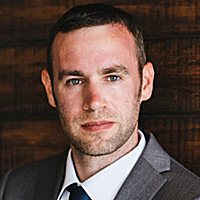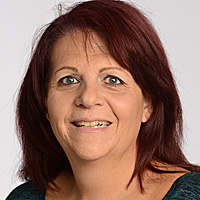
Local TV’s OTA Still Lags On Attribution, Optimization

The gap that separates linear ratings and digital metrics is still nowhere close to being closed when it comes to spot TV, but increasingly TV station groups have quality information to share with clients when it comes to seeing how their buys are performing.
That was the takeaway from last Thursday’s TVNewsCheck webinar, Data, Attribution and Optimization, moderated by this reporter and featuring panelists Jacob Leveton, director of product management, Veritone; Shawn Makhijani, SVP of business development and strategy, NBCUniversal Television and Streaming and SVP, NBC Spot On; Jane Meyerson, SVP, director of local media, ICON International; Daria Nachman, director, local positioning, Disney Advertising; and Brad Thompson, SVP and partner, integrated investment, UM Worldwide.
The bottom line in this space at the moment is that “it is extremely difficult to tie a linear broadcast back to a digital action that a consumer is taking,” said UM Worldwide’s Thompson.
But it’s a work in progress.

Shawn Makhijani
“I think we’ve come a long way,” said NBCU’s Makhijani. “If you rewound a bit before the world got complicated, we’ve always had attribution. It used to be the store owner saying that when the ad came on TV, all these people came into their business. People forget that there has always been attribution in our industry, it’s only when digital came about, we somehow got lost in the shuffle.”
Local broadcast over-the-air TV is still almost impossible to track digitally. The industry still relies on Nielsen to provide metrics — which remain ratings and broad gender and age-based demographics — and the challenges with Nielsen’s local TV panel are well documented. Meanwhile, however, most local broadcasters offer apps that are carried via connected TV (CTV) — services such as Roku, Tubi, Pluto TV and so forth — and viewership on those apps can be tracked much more closely.
“I think that ecosystem is really working, as is data targeting,” Makhijani said.
“What we could do better, of course, is automate,” he said. “We really need to automate the process, especially these attribution reports. If you’re on the digital side, where people are placing buys across 100 markets, it’s a lot of work if you can’t automate the process. We also need to educate both clients and sellers on what the attribution can really do, and how we can make it better.”

Jane Meyerson
“I really, really think you have to separate into two lanes – you have the broadcast piece and the CTV piece,” said ICON’s Meyerson. “I think we can all agree the CTV piece is so far along. But it’s that local broadcast piece that has not moved at all. There is basically no data on the front end, except for whether a viewer is male or female in a very broad demo. And then the lack of reporting, that you can get immediately on the CTV side, we have to get the broadcast side to that point or it’s a pretty bleak future for broadcast.”
One company that is working on solving this problem is Veritone, a technology company driven by artificial intelligence.

Jacob Leveton
“I think where that gets really interesting is where we talk about marrying and aggregating data,” said Veritone’s Leveton. “Using AI technology, we do a lot of content recognition to understand what was happening before and after the spot aired. The more data you have, the more you can start to put together a holistic picture of what is actually driving conversions. And really conversion and outcome-based performance is what I think a lot of advertisers are pushing for.”
Technology, of course, will play a big part in the solution, but there’s still a great deal of progress to be made.

Daria Nachman
Disney’s Nachman said: “We can tailor a package to maximize delivery among people who look like the people the advertiser is wanting to reach and to minimize delivery among people who don’t. We can definitely coordinate the buy so that the addressable portion performs a certain function, while linear extends the reach. I feel like linear is underrated in terms of the sophistication you can use to buy it because we do have a lot of audience information.”
That applies to optimization as well, Leveton said.
“The speed at which you can get data and see the signal through the noise is very important,” he said. “[Over a campaign’s] first two weeks, you should probably test a variety of approaches — a variety of programming and different segments that look like they’re going to be the best options, and then use the data coming in from that to try and optimize towards what’s actually driving success and outcomes, and website visitation and foot-traffic visitation.
“I think that the one thing that we’ve learned from the digital ecosystem is that that timeline to responsiveness is getting shorter and shorter,” he said.
But there still needs to be technology — automation and otherwise — that allows TV stations to process, understand and act on incoming data and information as efficiently as possible.

Brad Thompson
“It’s having the tech to do [all of this] in a way that you’re not going to crush the people that are trying to execute the campaigns,” Thompson said. “We’re talking a lot of volume and it’s hard enough from a buyer standpoint to put together the campaigns with all the other demands that they have. But trying to do something where you’re layering on that database is, you cannot [yet] do that. The tech challenges across the board have taken much longer than I ever thought they would. We’re making progress. But we’re not there yet.”
In fact, while technology plays an important part in figuring out this challenge, the softer skills of negotiation, communication and diplomacy play at least an equal part. A huge part of those conversations includes determining what the industry currency will be going forward.
“I think there’s a broader challenge … around the discussion of metrics and currency and measurement,” Thompson said. “Is there going to be one currency going forward? And how does that then play into attribution? These are all things that we as an industry have to figure out, and I think the industry is in a big learning position right now.”
Looking ahead, TV station executives see NextGen TV coming down the line and are looking forward to the changes the new technology will bring.
“I know the data is only going to get better,” Nachman said. “I know the tech is going to get better. I mean, when NextGen comes out, that could be a game changer. I love what goes on with content recognition. I think the tech is only going to make us better.”
Makhijani added: “[Next Gen TV] will seamlessly merge the internet with broadcasts so we’ll get data and IP tracking. It’s basically everything we can do now on digital, come to broadcast. You’ll see a lot of the questions that have come up on attribution on this panel be resolved, and we’ll be able to extrapolate from that on to what a cable viewer does.
“So, there’s still a chance that what’s available over the air will also be available via the MVPDs [multichannel video programming distributors],” he said. “And then we’ll get a much more robust data set. It’s a dream, but we can dream.”
































Comments (0)